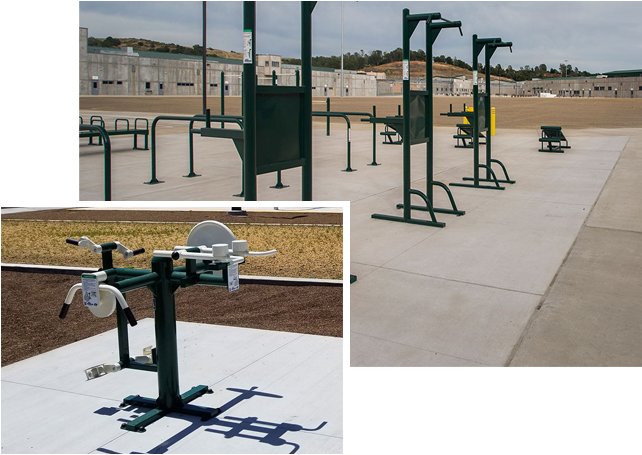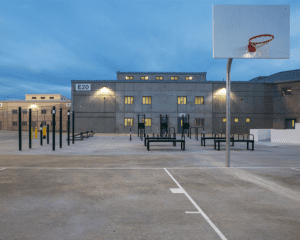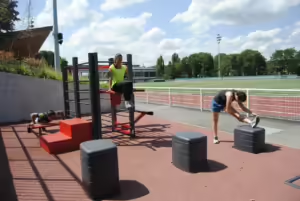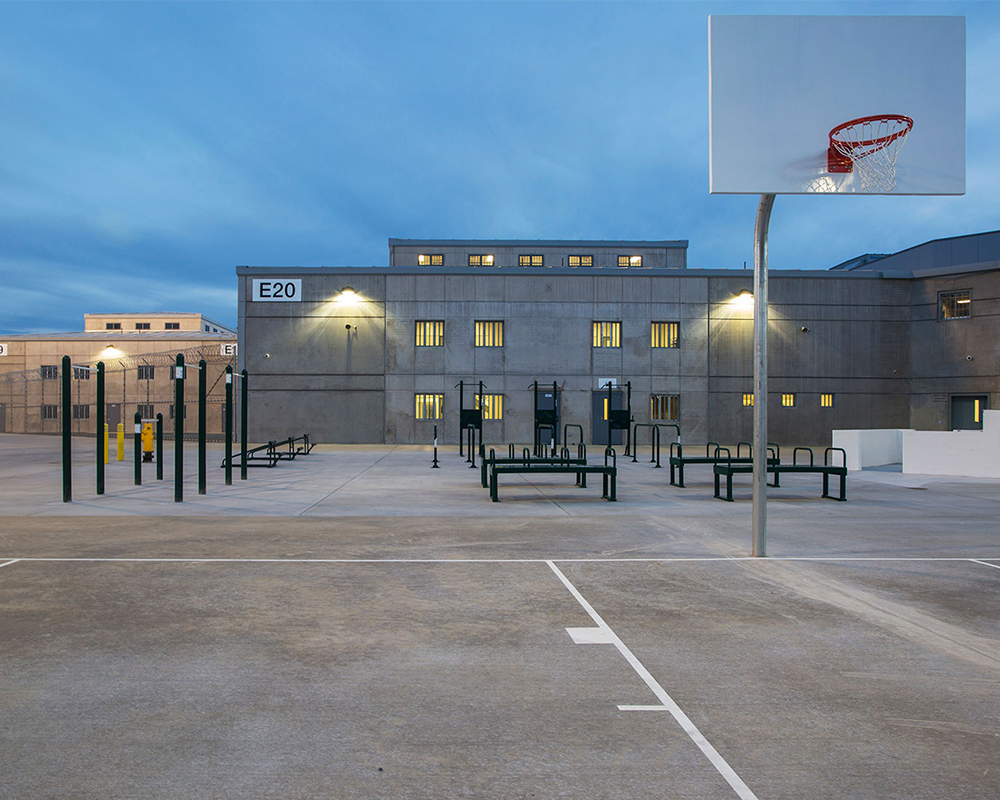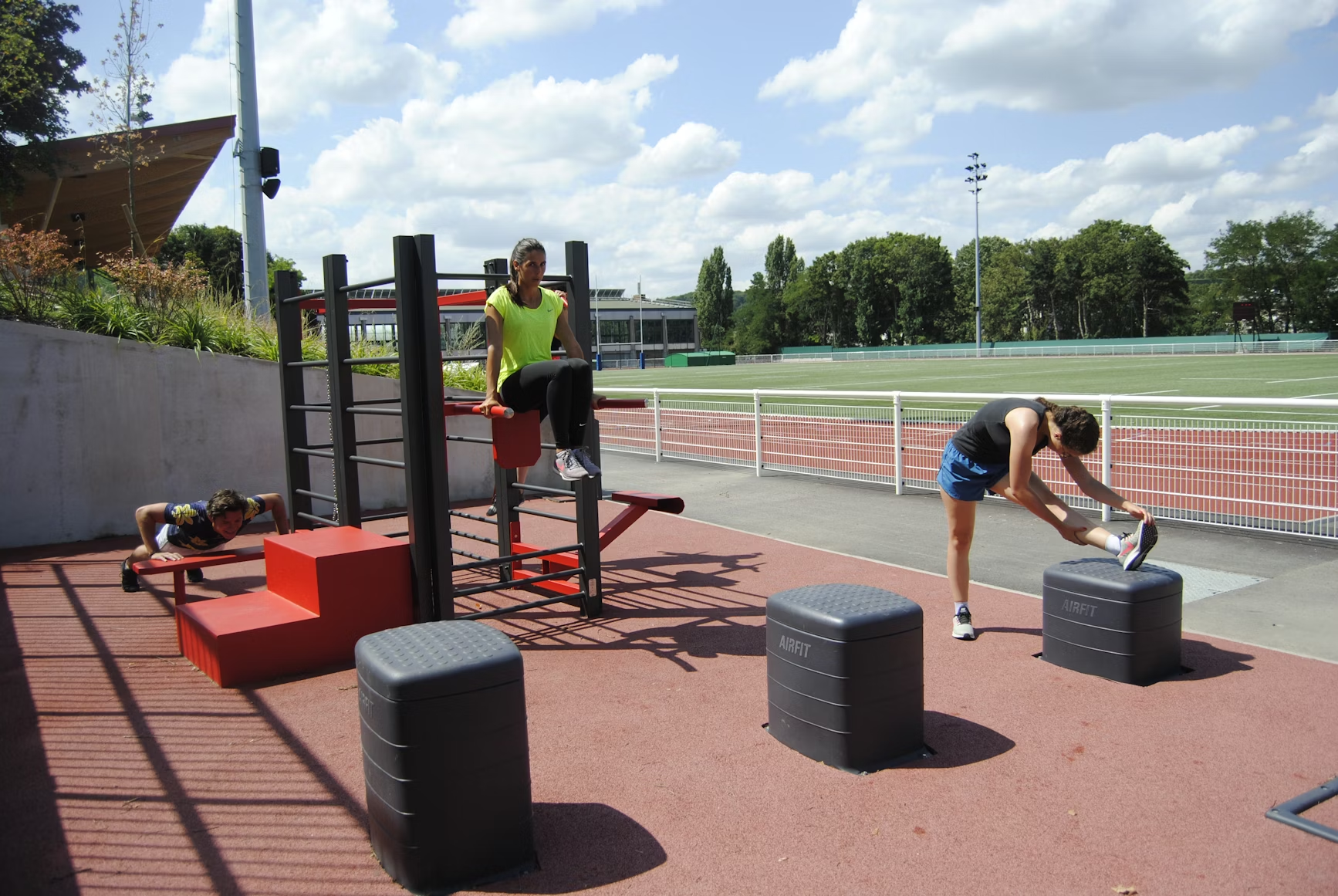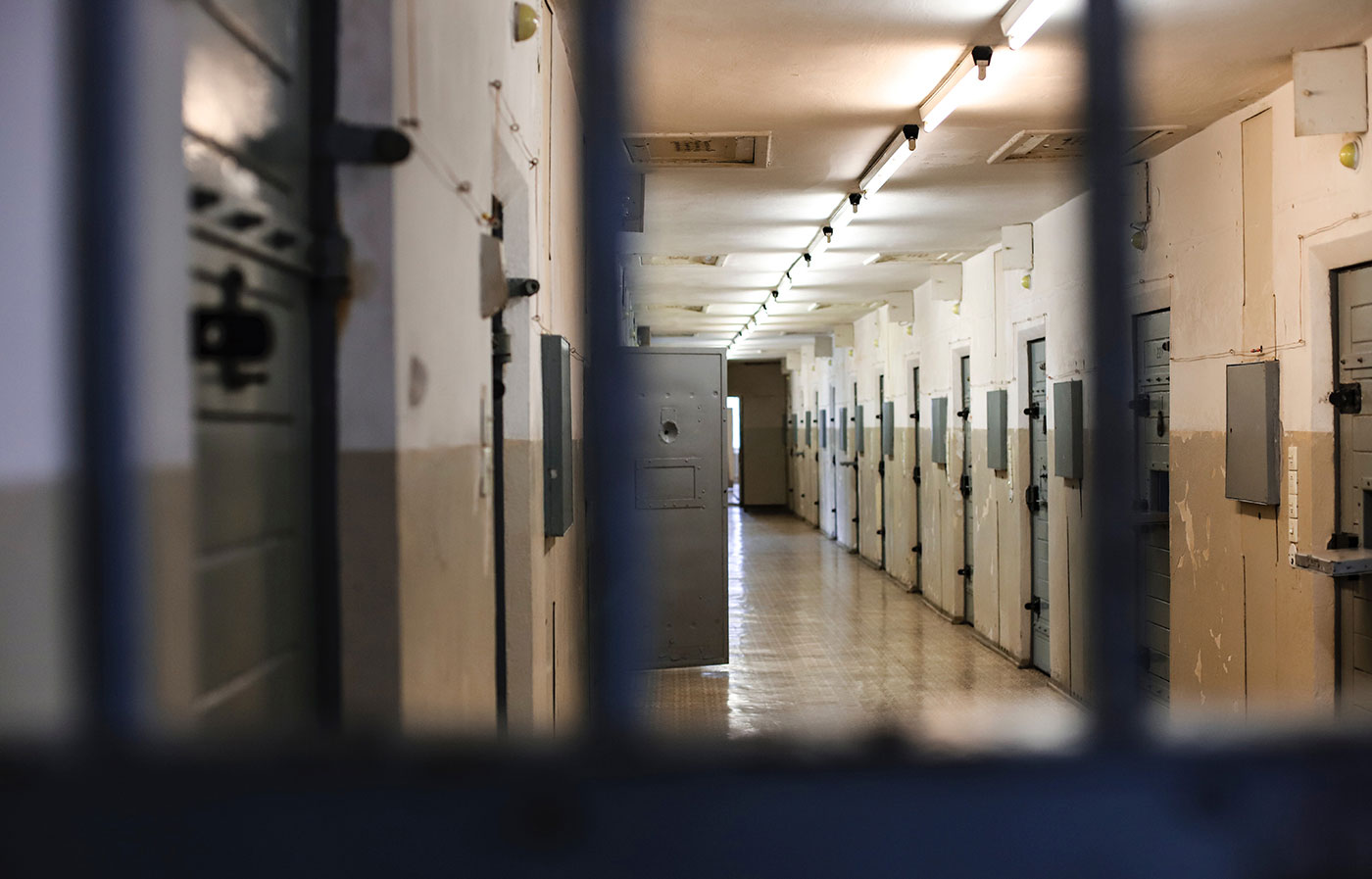Prison weightlifting plays an essential role in correctional facilities, promoting physical and mental health and helping people stay busy. As a result, outdoor gyms in prisons have become more common over the years.
Learn more about prison weightlifting and what makes it different from a standard workout.
What Is Prison Weightlifting?
Prison weightlifting gives people in correctional facilities an opportunity to work out and stay physically fit. Most correctional facilities have recreational spaces where people can blow off some steam, and most of those recreational spaces are equipped with outdoor fitness equipment.
Basic Equipment Setup and DIY Gym Equipment in Prisons
For most people, strength training involves a combination of free weights and bodyweight exercises. However, correctional facilities use different types of equipment to ensure the safety of gym users.
Our outdoor fitness equipment is ideal for prison weightlifting because there are no free weights or exposed moving parts. Our strength training equipment uses your body weight to create resistance, offering a safe workout for people of various sizes and skill levels.
People in prisons also make use of DIY strength training equipment, using everyday objects for workouts like pullups, dips, and squats.
Prison Weightlifting in the Correctional Environment
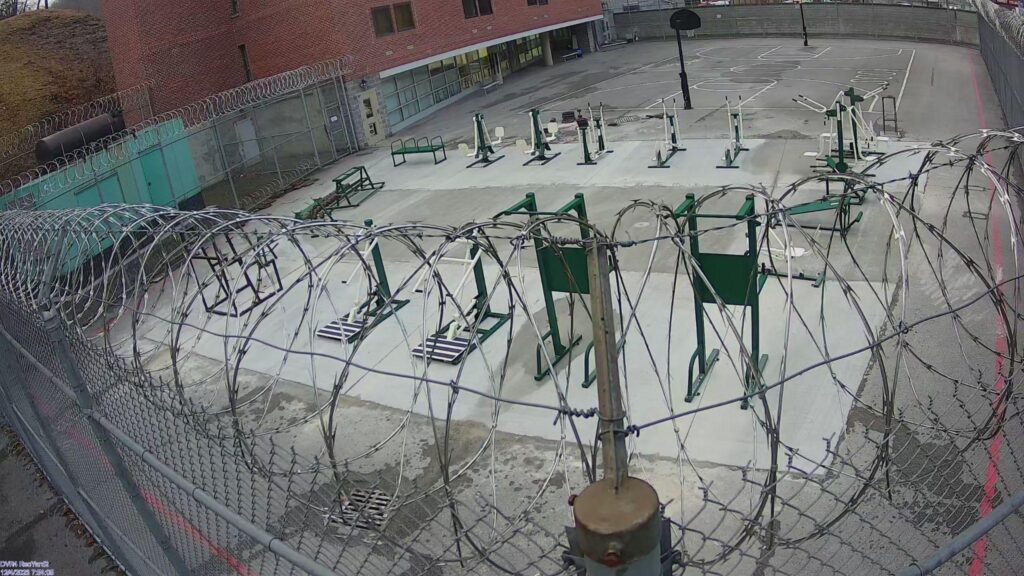
Physical fitness is still important when you’re in a correctional facility, but there are some key differences and obstacles that affect prison weightlifting.
Daily Routines and Structured Exercise Programs
When you have a membership at your local gym, you can decide when you want to work out. People in correctional facilities have more structured schedules, which can make it difficult to find free time to exercise. For many inmates, working out is only an option for a couple of hours each day.
Limited Resources and Improvised Strength Training
Limited resources are a huge problem in nearly every aspect of correctional facilities, and that includes exercise equipment. Correctional facilities don’t have a surplus of money to spend on new exercise equipment, so inmates have to settle for using old equipment and finding other ways to train.
Improvised strength training is a cornerstone of prison weightlifting. Inmates who don’t have access to standard equipment find other ways to train, including bodyweight exercises and using everyday objects to train.
Inmate Rehabilitation Exercise Programs and Their Role
Correctional facilities are designed to provide rehabilitation for inmates, and exercise programs play a key role in that process. Inmate rehabilitation exercise programs provide a structured routine for inmates, helping them stay physically fit while enjoying the many benefits of exercise.
Inmate exercise programs can result in reduced stress, improved mood, and a lower risk of anxiety and depression. Because of these benefits, prison weightlifting programs have become a staple in correctional facilities all over the world.
Differences Between Prison and Gym Training
While gym and prison weightlifting offer similar benefits, there are some key differences. Let’s take a closer look at some of the biggest differences between prison and gym training.
Equipment Accessibility and Creative Substitutions
Correctional facilities have limited resources in terms of exercise equipment, while most gyms have a surplus of equipment to allow everyone to work out during busy hours. As a result, it can be more difficult to find time to work out in a correctional facility.
The lack of accessible equipment in correctional facilities also means inmates have to get creative. Some inmates start the day with calisthenics or bodyweight exercises while others use squats and lunges to get some plyometric workouts in.
Space Constraints and Confined Space Workouts
When you’re working out at home or at your local gym, you have plenty of space to move around and stretch. Prison weightlifting is a different story, inmates can either work out in crowded outdoor areas or work out in the confinement of their cell.
Correctional facilities that create a designated exercise area with plenty of equipment make it easier for inmates to stay physically fit and emotionally healthy.
Safety, Supervision, and Exercise Safety in Prisons
Safety and supervision are two of the biggest concerns when it comes to prison weightlifting. People who are in correctional facilities, especially for violent crimes, need to be supervised more closely than the average person. As a result, most inmates are only allowed to work out for a small amount of time each day.
Prison weightlifting equipment that’s designed for safety can help solve this problem. Equipment with no free weights or moving parts is safe for everyone involved, so correctional facilities can provide equipment without worrying about injuries or accidents.
Effects on Physical Strength and Mental Wellbeing
For many inmates, prison weightlifting is one of the best ways to pass the time. Learn more about some of the benefits of exercising regularly while in prison.
Impact on Muscle Building and Overall Fitness
Spending time in correctional facilities can have a significant impact on your health. It can be difficult to get the nutrients you need to build and maintain muscle in prison, especially if you don’t have access to equipment.
Prison weightlifting equipment gives inmates a chance to build muscle and improve their overall physical fitness, so they can be healthy during their stay.
Psychological Benefits, Stress Relief, and Mood Enhancement
Working out also offers a long list of psychological benefits. Exercising produces endorphins that help elevate your mood and manage stress. If you’re exercising outside in the sunshine, the effects of vitamin D also play a role.
In correctional facility environments where spirits aren’t always high, these mental and emotional benefits are key.
Common Pitfalls in Prison Weightlifting
Despite the benefits, there are several prison weightlifting challenges inmates and correctional facility managers may face.
Risks of Improper Form and Injury
Whether you’re working out at home or in a correctional facility, using proper form is essential. Proper form ensures you’re getting the best workout and reduces the risk of injury. If inmates aren’t using proper form or are misusing equipment, it could lead to costly injuries.
Challenges from Limited Equipment and Facilities
Prison weightlifting facilities aren’t as well-equipped as most gyms, which means there isn’t always equipment available for everyone. It’s important for correctional facility managers to make sure inmates have enough equipment, and other recreational activities, that they aren’t going to be fighting over equipment.
Overcoming Institutional and Social Barriers
Unlike the average person, there are barriers to exercise for prisoners. Inmates can only exercise as often as the correctional institution allows them to, which is typically a very limited amount of time. Even if you have time to exercise, limited social support and stigmatization can make exercising difficult.
Frequently Asked Questions
Can Prison Weightlifting Effectively Build Strength?
Prison weightlifting is an excellent way to build strength as long as you’re using the right equipment and following a routine.
What Types of Equipment Are Available in Correctional Facilities?
Correctional facilities have most of the same equipment you’d find at your local gym, including multi-gyms, cardio equipment, shoulder presses, and pull-up bars.
How Do Prison Routines Impact Workout Consistency?
Inmates have limited time periods to workout, which can make it difficult to follow a detailed exercise routine. Improvisational training can help supplement an inconsistent workout.
Are There Rehabilitation Benefits to Prison Exercise Programs?
Prison exercise programs provide physical and mental health benefits, which are absolutely key parts of the rehabilitation process.
Conclusion: Different Settings, Different Gains
Prison weightlifting is a lot different than working out at a local gym, but it still offers the same benefits. It’s important for correctional facilities to provide essential equipment that can help with inmate rehabilitation.
At TriActive USA, we’ve got a collection of prison weightlifting equipment designed for correctional facilities, featuring tamper-proof hardware and no free weights. Check out our catalog to learn more.

